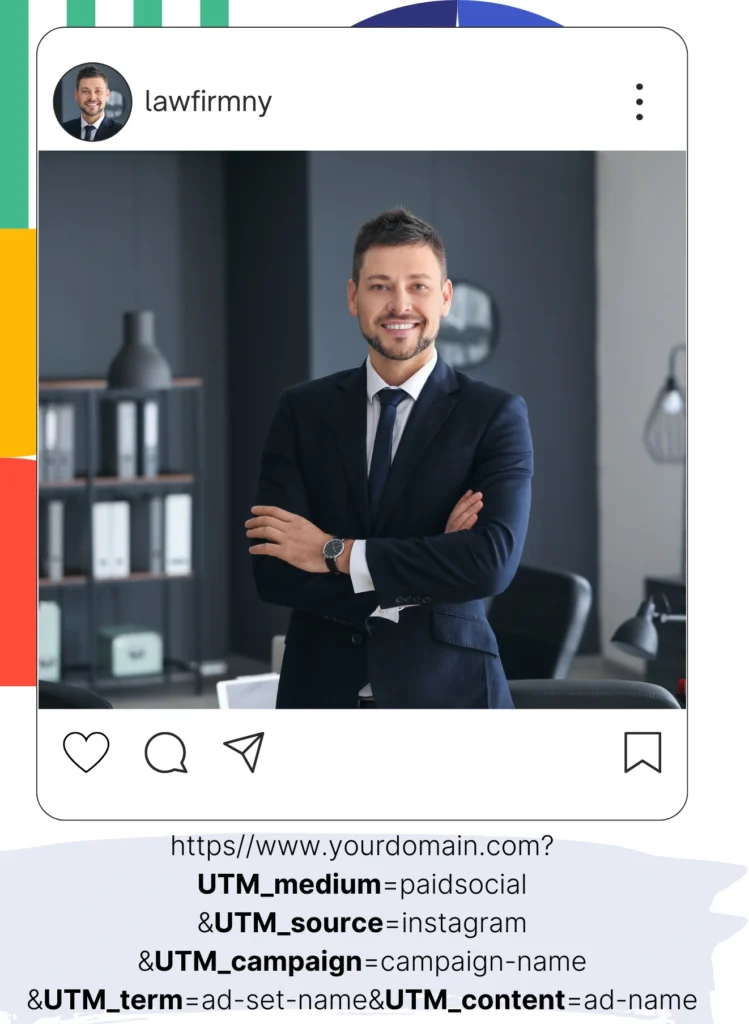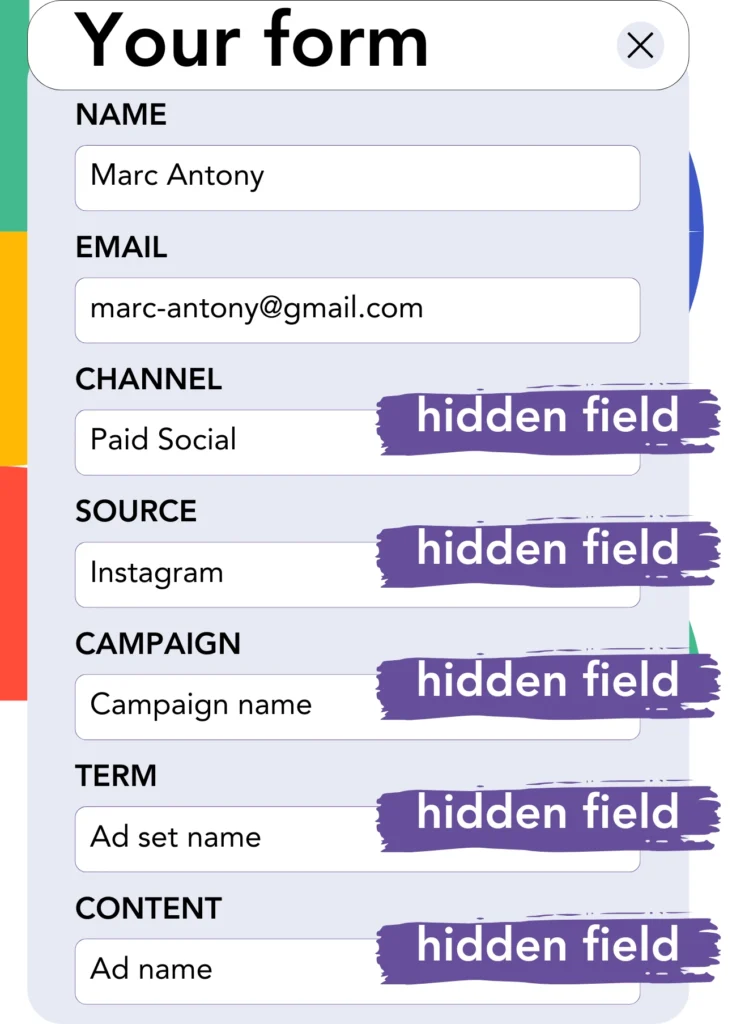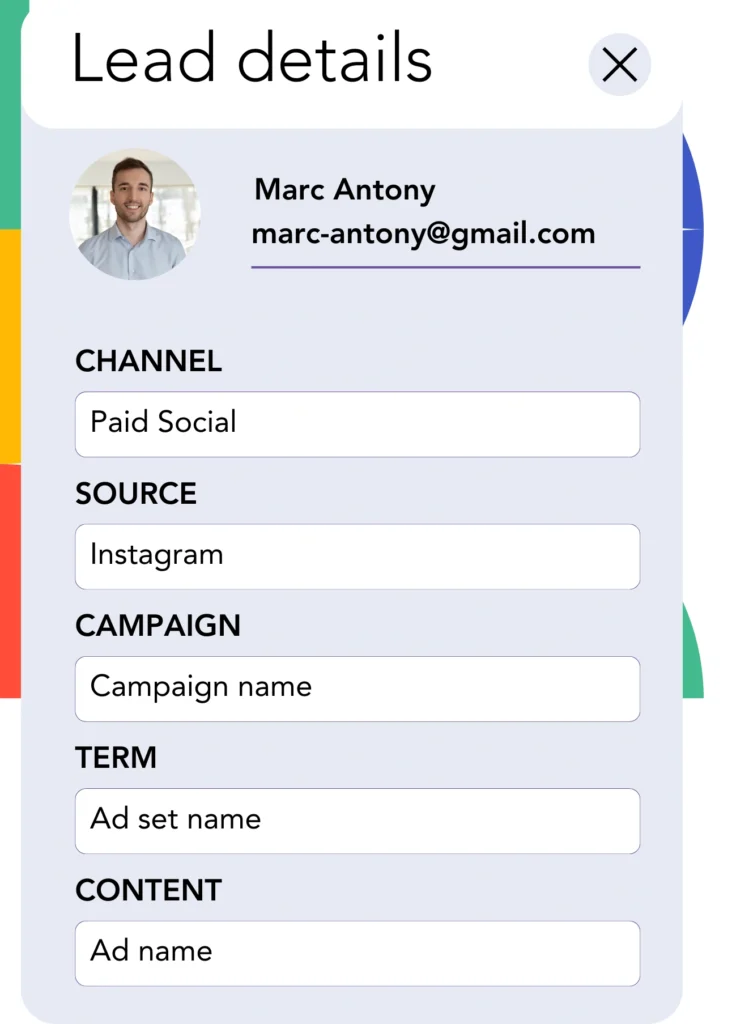You move leads from Instagram to Insightly, yet connecting each one to its particular ad is out of reach. Similarly, once these leads become customers, there’s no way to trace them back to the ad that started it all.
The inability to track your Instagram ads prevents you from knowing which ones perform best in generating leads and customers. As a result, you may be spending on ads without a clear understanding of their value.
Fortunately, a clear solution lets you track each lead back to the specific Instagram campaign, ad set, and ad that produced it.
Let’s review it, step by step!
How to Track Instagram Ads in Insightly
Step 1: Add Leadsources in the head tag of your website

Step 2: Add the UTM parameters to your Instagram ads

Place UTM parameters in your ad URL to track Instagram ad data like campaign, ad set, and individual ad. Use the following example:
UTM_medium=paidsocialUTM_source=instagramUTM_campaign=campaign-nameUTM_term=ad-set-nameUTM_content=ad-name
Your final URL should appear like this:
https://www.yourdomain.com/?UTM_medium=paidsocial&UTM_source=instagram&UTM_campaign=campaign-name&UTM_term=ad-set-name&UTM_content=ad-nameImportant to note: Leadsources compiles all lead source details, even when UTM parameters aren’t present, ensuring comprehensive tracking for every lead.
Step 3: Add the hidden fields in your form

Hidden fields are sections of the form that users cannot view, yet they can retain information that is submitted when the form is completed.
The lead source data is captured in hidden fields of your form by Leadsources. So when a lead submits the form, Leadsources automatically inputs Instagram ad data into these fields.
Leadsources supports integration with all well-known form builders. For in-depth instructions on including hidden fields in your form, check out this guide.
Step 4: Capture the Instagram ads data in Insightly

When users click on your ads and get to your site, Leadsources extracts the Instagram campaign, ad set, ad data, and more.
Leadsources populates Instagram ads data into the hidden fields of your form.
As a result, when the form is submitted, the Instagram ad data and lead details can be viewed in Insightly (This requires a connection between your form and Insightly).
How does Leadsources work?
Each time someone clicks on your ads and reaches your site, Leadsources collects Instagram ad data and fills the hidden fields of your form. Upon submission, this data goes to Insightly, along with the lead information you recorded (like name and email).
Leadsources tracks every aspect of lead source data for each lead you acquire:
| Lead source data | Fetched automatically |
| Channel | ✅ |
| Source | ✅ |
| Campaign | ✅ OR use UTM_campaign |
| Content | UTM_content parameter is required |
| Term | UTM_term parameter is required |
| Landing page | ✅ |
| Landing page subfolder | ✅ |
As detailed in the table above, even in situations where UTM parameters are impractical—such as organic sources like Google search or Instagram bio links—Leadsources still gathers some lead source data:
- Channel
- Source
- Campaign
- Landing page
- Landing page subfolder
In distinction to other tools, Leadsources captures lead source data from all marketing channels, whether they are organic or paid.
Performance reports: Lead, sales, and revenue by source
By recording Instagram ads data in Insightly, you can formulate performance reports that feature:
- Leads, sales, and revenue by channel
- Leads, sales, and revenue by source
- Leads, sales, and revenue by campaign (aka. Instagram campaign)
- Leads, sales, and revenue by term (aka. Instagram ad set)
- Leads, sales, and revenue by content (aka. Instagram ad)
This supports your efforts to adjust your Instagram budget based on which campaigns, ad sets, and ads deliver the most leads, sales, and revenue.
Let’s uncover some of the reports you have the ability to create:
1. Lead source reports
Create performance reports that highlight the leads generated by:
- Channel
- Source
- Campaign (aka. Instagram campaign)
- Term (aka. Instagram ad set)
- Content (aka. Instagram ad)
- Landing page
- Landing page subfolder
Example #1: Leads by channel
This report helps you discover which channel is most effective at producing leads.

Example #2: Leads by Instagram campaign
You can now prioritize a specific lead source (e.g., Instagram) and quantify the number of leads generated by every Instagram campaign.

Example #3: Leads by Instagram ad
Once you identify the Instagram campaign that results in the most leads, you can take a closer look at which ad group or ad contributes to those leads.

2. Sales and revenue source reports
Since we’ve identified the Instagram campaign, ad set, and ad that generate our leads, it’s essential to analyze if these leads are converting into sales and revenue.
For this purpose, connect your leads to a CRM such as Insightly. This connection provides the ability to track sales and revenue produced through various channels, sources, Instagram campaigns, ad sets, ads, landing pages, and their subfolders.
With these insights, you can revise your Instagram ad strategy to concentrate on the channels, sources, campaigns, ad sets, and ads that deliver the highest sales and revenue.
You can create a selection of sales and revenue reports, such as:
- Sales and revenue by channel
- Sales and revenue by source
- Sales and revenue by campaign
- Sales and revenue by term (e.g., Instagram ad set)
- Sales and revenue by content (e.g., Instagram ad)
- Sales and revenue by landing page
- Sales and revenue by landing page subfolder
Example Scenario:
| Channel | Search Paid | Social Paid |
|---|---|---|
| Leads | 50 | 75 |
| Sales | 5 | 6 |
| Average Order Value | $150 | $100 |
| Revenue | $750 | $600 |
After the ads went live on Google and Instagram, the first “Leads by Channel” report showed that Social Paid ads (Instagram) were responsible for more leads than Search Paid ads.
After analyzing sales and revenue data in Insightly, you found that the Search Paid channel generated more revenue while attracting fewer leads than the Social Paid channel. This led you to adjust your budget to invest more in the Search Paid channel.
LeadSources tracks the source of each lead in Insightly, whether they come from ads, organic search, social, email, etc. and syncs that data with each submission. See the full breakdown on the lead source in Insightly page.

